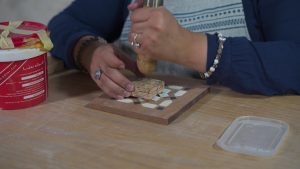During the last few months we have been working with our colleagues in Cairo from the Egyptian Heritage Rescue Foundation (EHRF) and Lazo Studios (https://www.lazostudios.co.uk/) on a digitisation project of intangible cultural heritage. The project “Linking collections with the living heritage of craft: enhancing communities through digital innovation” (2019-2022) seeks to gather requirements and engage with heritage practitioners and international communities to develop novel technology mediated methods in order to contextualise crafted heritage collections. As a result, the project aims to transform and reinforce the links between tangible artefacts in memory institutions in the western world and the intangible living heritage practice and knowledge in communities around the world. Such “transformations” have the potential to enhance the documentation of handicrafts collections, while nurturing the living heritage craft practices in developing countries to support communities to preserve the knowledge of craft; enhance crafting activities (or develop them further); and create sustainable futures. As demonstrated by international efforts, political, social, and economic inequalities can be substantially addressed when communities affected by them can be supported through initiatives that reinforce their sense of belonging and resilience through crafting and cultural practices.

During the project we have engaged with crafters in Egypt and the United Kingdom to explore the application of digital technologies for the documentation and dissemination of this intangible living heritage knowledge. This includes experimentation with technologies such as 360 video and photography, ethnographic film and photography, Reflectance Transformation Imaging, and 3D photogrammetry. Currently, we are investigating ways to provide open access to this information. Transmitting such invaluable knowledge is key to preserve the craft for future generations; to support the dissemination of the artistry and the skills which crafters display in the execution of their products; and to reinforce living heritage practices, while potentially improving branding of handcrafted products.

We have received funding from the International Research Fellowship (GCRF) at the University of Brighton and the Santander Research Placement fund. This research is core to our aims as we seek to develop novel digital technologies for the documentation, preservation, and access to both tangible and intangible cultural heritage processes and assets. Hence, our scientific research seeks to have practical applications and high impact to benefit different communities, including heritage institutions, audiences, as well as world-wide communities and their living heritage.
